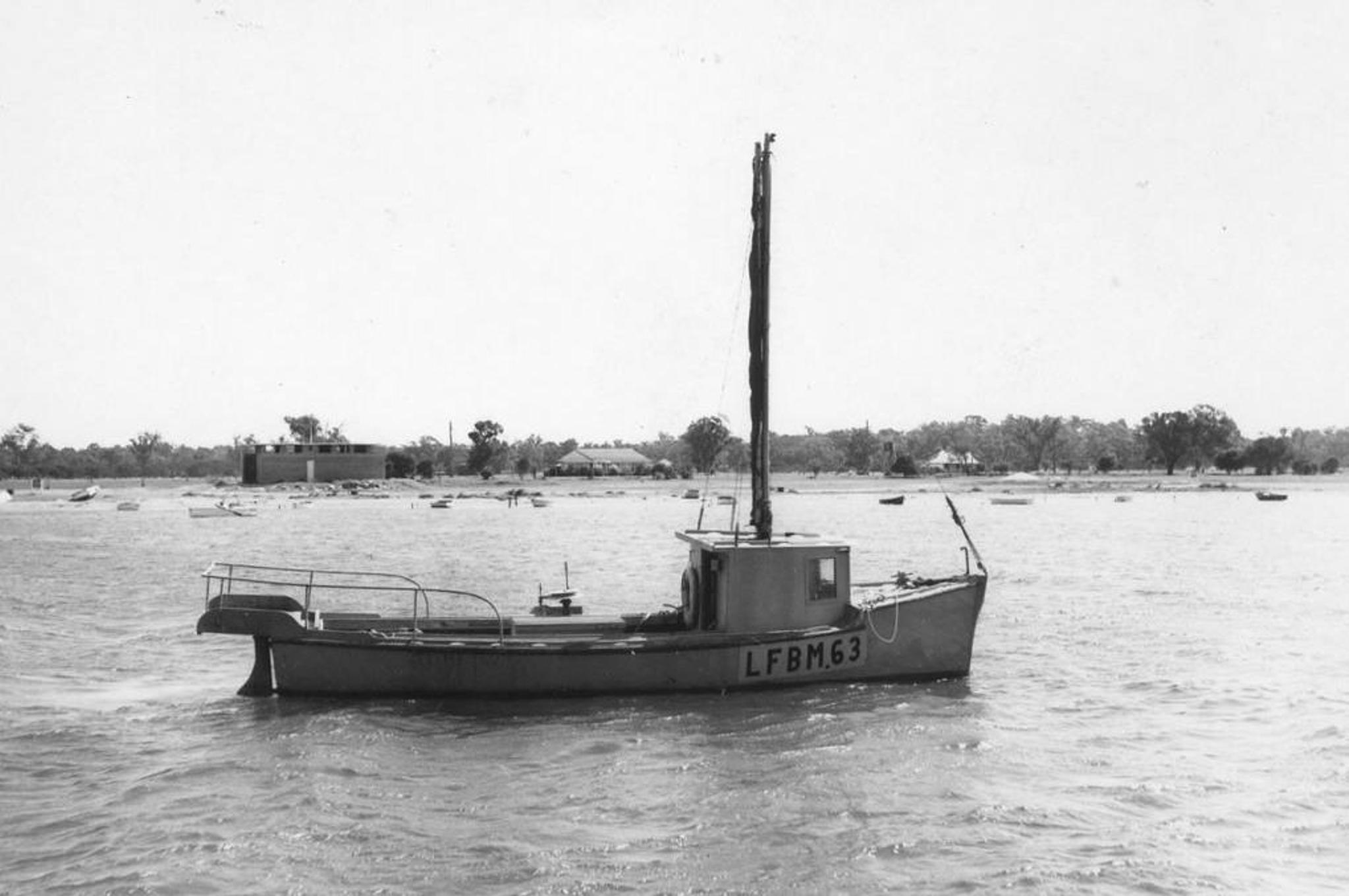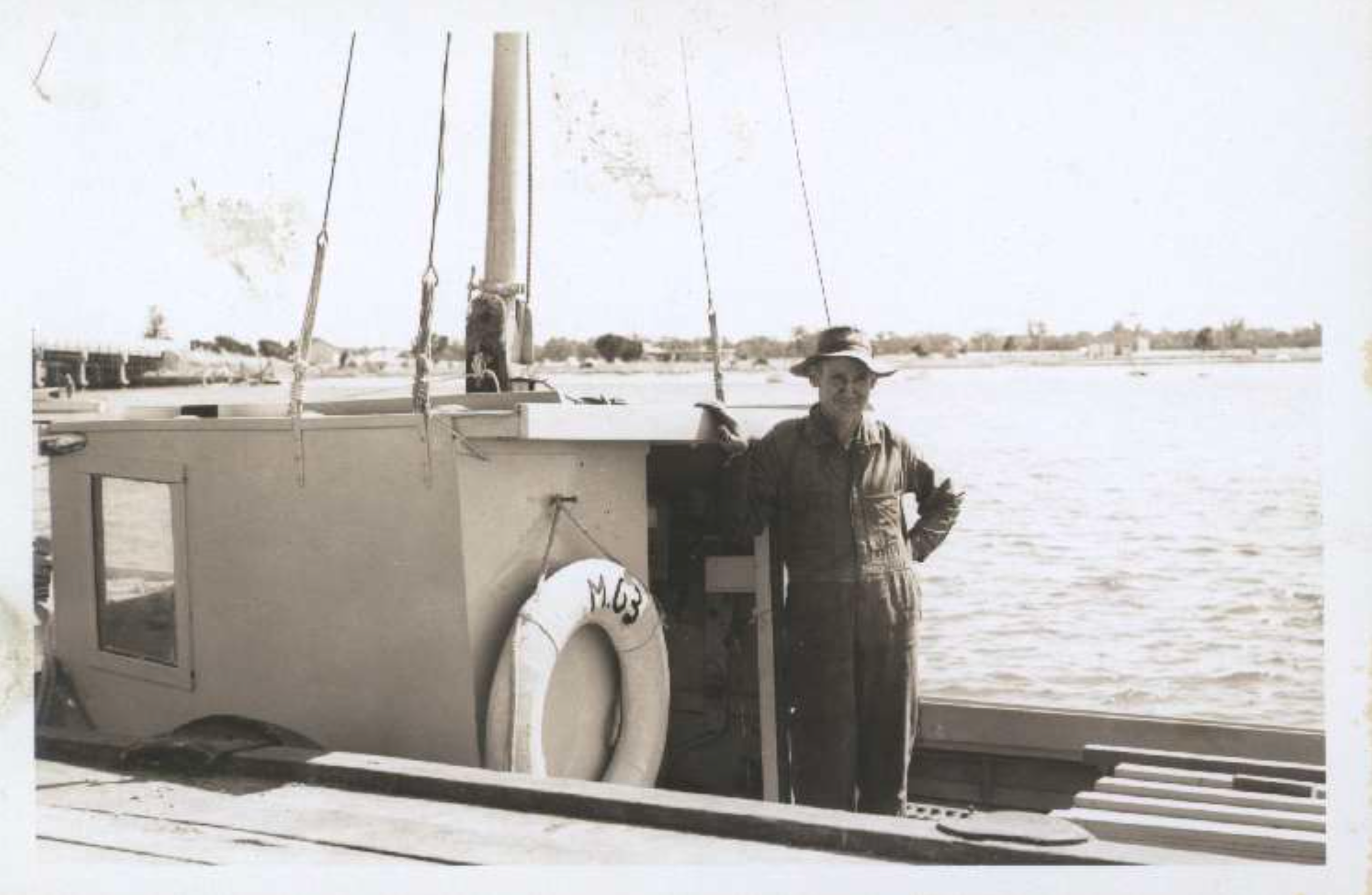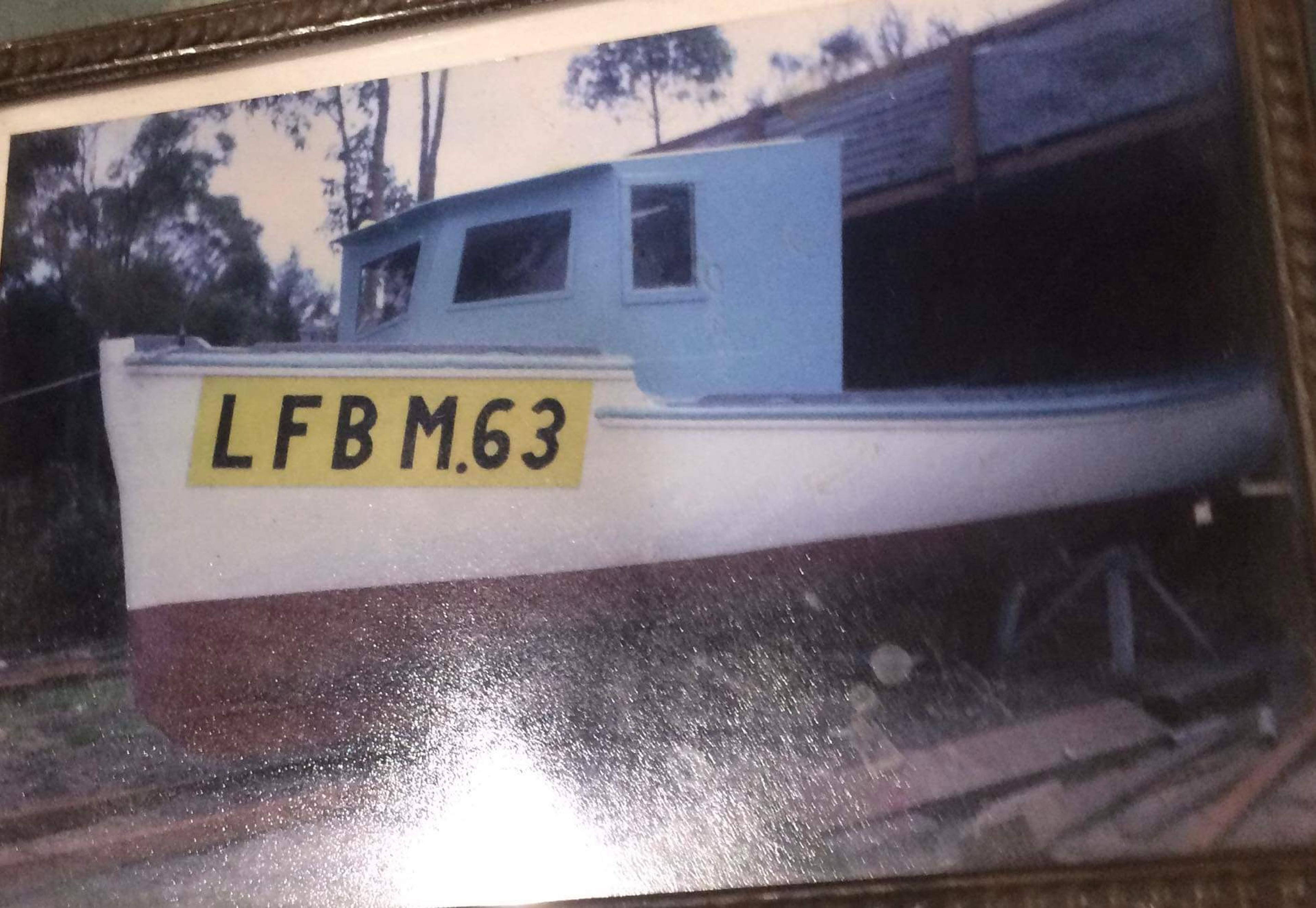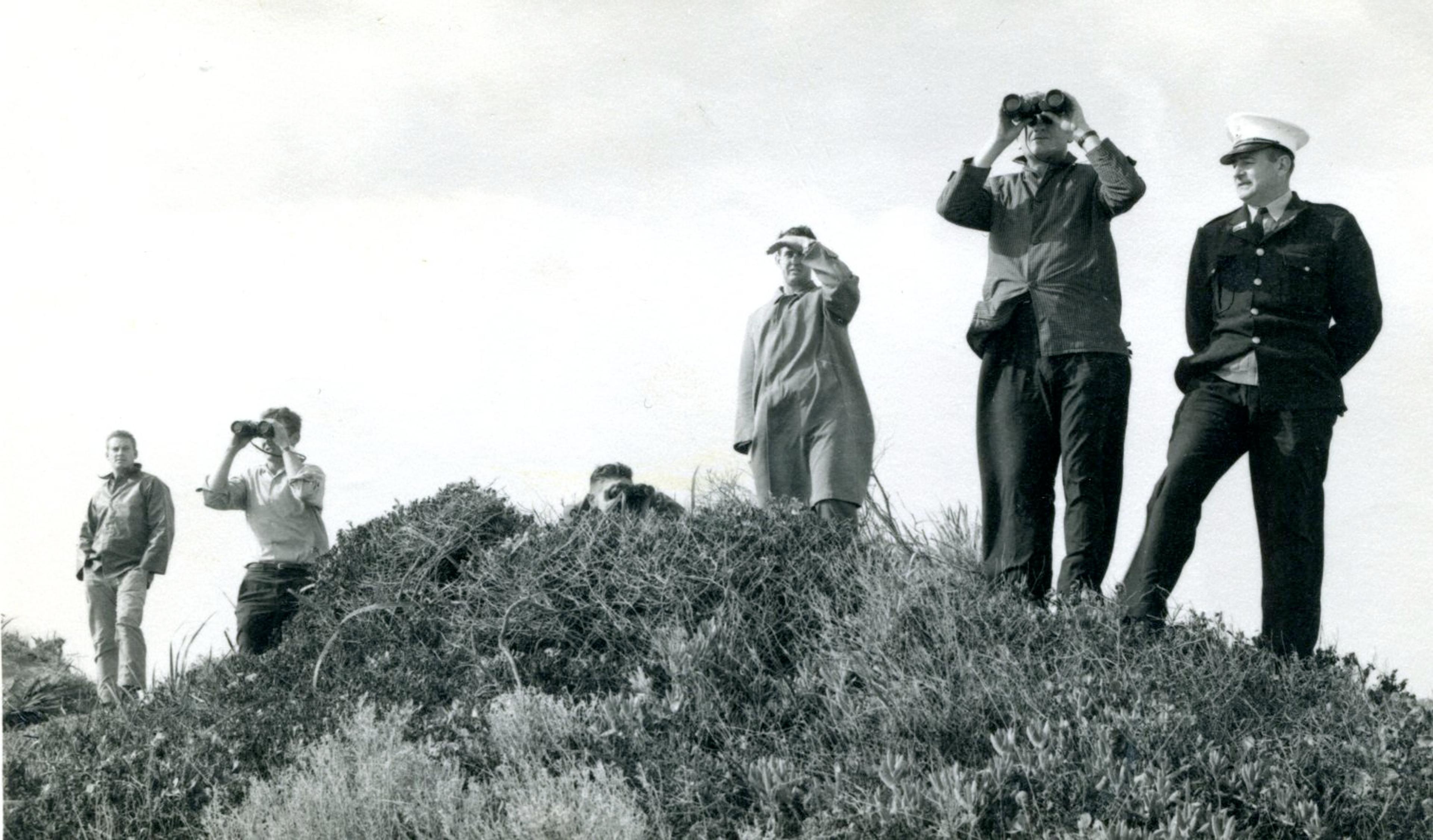Avaneta
Vessel Name: Avaneta
Hugh Cameron Gill
Symond Bevan Hahn
Lost At Sea; Never Found
7 March 1968

Avaneta

Hugh Gill onboard Avaneta

Bevan Hahn

Avaneta

Avonita carried licence number LFBM63

Reports of the missing ship lead to a major land, sea and air search operation

The West covered the progress of search operations

The Coastal District Times
Fishing boat, Avaneta, carrying license number M63, was owned by Hugh Cameron Gill (59), but Symond Bevan Hahn (32) was Skipper, as he was the holder of a Coxswain and Marine Motor Engine Drivers certificate. The boat left Mandurah at 4:30am on the morning of Thursday 7 March 1968, to go crayfishing approximately 20 miles west of Mandurah.
The Avaneta was 30 foot (nine metre) in length and constructed of double diagonal plank, with half-inch plywood covering outside planks, and powered by a 53 horsepower diesel engine. The boat was equipped with a two way radio. The vessel was painted white, with a blue wheel house situated forward, and brown sail. She was rebuilt and renovated in December 1967 and was 22 years of age.
At about 1pm, a strong southerly wind developed between 20 and 25 knots causing very rough seas. The Avaneta did not answer radio calls sent by George Layton from the Cooberry at midday and 4pm that day. The brother of George, John Layton reported the boat overdue to the Police at 9pm that same day.
The two men had last been sighted at around 1pm working a line of craypots some 25 miles (36 kilometres) from Halls Head by another Fisherman, Fraser Hugh MacDonald. When they were last seen, the boat did not appear to be in any trouble, and had not drifted far.
Two fishing boats, the Julie Jean, owned by Arthur Sexton, and the Lady Emily, owned by Robert Stone, searched all night without finding a trace of the Avaneta. Their search covered an area from Gill’s craypots North to Garden Island, and later South to the Bouvard. They counted 16 cray pots missing from the line, so it was surmised that the Avaneta had 16 craypots on board when she perished. When fully loaded, the boat had only about six inches of free board to the self-draining holes.
The following morning, a Dakota aircraft from RAAF Peace, horsemen on the beach and a coastal sweep by a flotilla of yachts returning from Bunbury’s Koombana Regatta failed to turn up any clues. The disappearance was a mystery and deepened as time passed.
The first sign of the missing boat was on Monday night of 18 March, by Fisherman Salvatore Pasquale Raffa of the fishing boat, Beatrice. He handed to the Mandurah police a plywood box measuring 30 inch x 18 inch x 20 inches (76cm x 46cm x 51cm), with two nylex floats attached, bearing the Avaneta’s number, M63, which he found about four miles north from Gill’s craypots.
These were identified as being part of the boats gear by George Layton, who worked on the boat some years prior, and Ernest Spice, who lived with Gill and had made the box. It was used as a bait box, and as a crayfish sorting box. Fishermen believe that the box went to the bottom with the Avaneta, but broke loose and came to the surface during heavy weather over the weekend.
Local fisherman, John Layton, recalls that after a couple of weeks of searching, about 40 floats were found and in amongst them was the aerial of Hugh Gill’s boat, a box with M63 branded on it and other gear from the boat. A float with a big Rangoon cane pole and a black flag on it was placed at the location.
By the time divers were brought in, the float had broken off and was found out near Rottnest. The location was lost. Ann Layton, local resident recalls the theory of some Cray fishermen. They believe that while Hugh and Bevan went in the cabin for a coffee, that a large, unexpected wave hit the boat, tossing the stern in the air causing the craypots that were stacked there to be sent forward, and locking them in the cabin. The two men would have been trapped as the boat capsized, or was swamped.
Another theory provided by Arthur Sexton, was that both men were in the cabin and did not notice the boat taking water in the stern. The boat could have filled and gone down stern first without warning.
John Layton worked with Gill as his skipper for several cray fishing seasons between Safety Bay and Mandurah. He recalls a time when he wasn’t working with Gill, that the skipper and Gill got lost. When he found them, he told them to follow him. They took a wrong turn twice. The second time a wave hit the boat and it sank. He saved Gill, who couldn’t swim and the echo sounder and two way radio from the boat.
The next day Layton pulled the boat out of the river. Gill repaired the damaged hull of the boat, but without foam which would have made it unsinkable. Gill said he would put foam in it after the crayfish season.
The next season the boat was beached. Layton helped free the boat. Shovels were used; ropes attached to another boat for pulling and man power for pushing the boat. It was checked over and it continued with the crayfish season.
Layton noticed the next season that the stern tube was leaking water into the boat. According to Constable Warrick’s Police Report, the self-draining deck had not been secured correctly, or sealed, and the tail shaft bearing had been repaired under water, and not checked on the slipway prior to sea.
Whatever happened to the Avaneta and her crew is a mystery that is unlikely to be solved.
Gill was single at the time of the tragedy. Hahn left behind his wife, 2 daughters Sherril (5), Joanne (3) and 18 month son Paul when he was lost at sea. The day of the tragedy Sherril was in school and when she heard the planes fly over she ran all the way home thinking they had found her Father. Joanne found it easier to imagine he was living on a deserted island and one day he would be found.
Tragically, Hahn's son Paul drowned at the age of 16 near the Ravenswood Hotel after doing a cross-country leg of the Alcoa Super Challenge.
